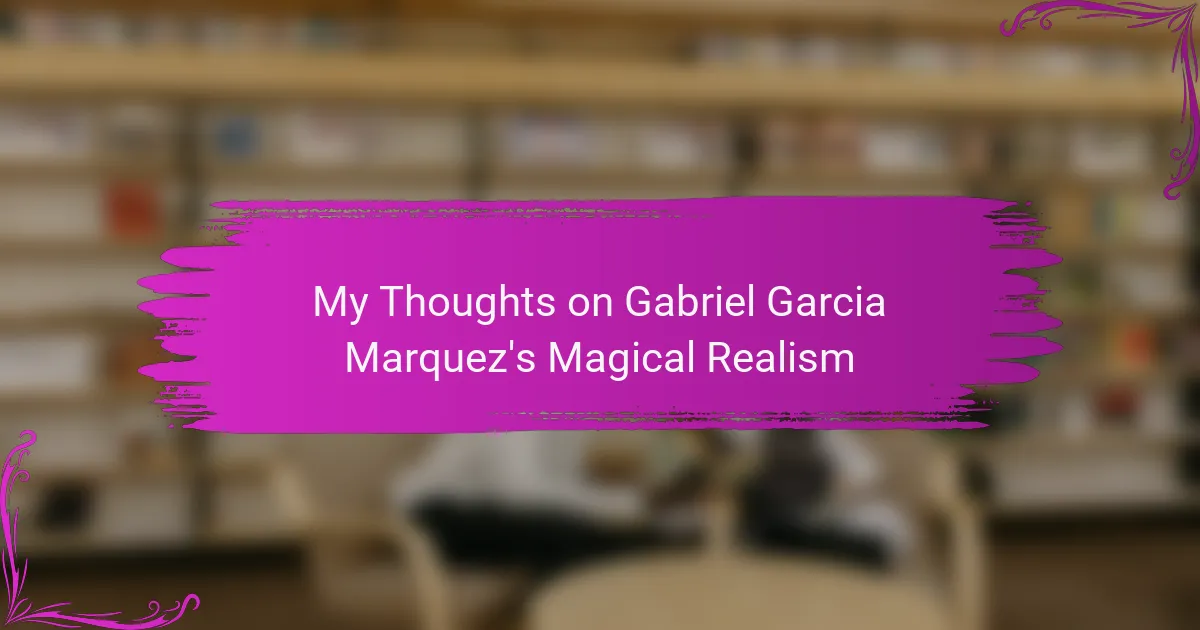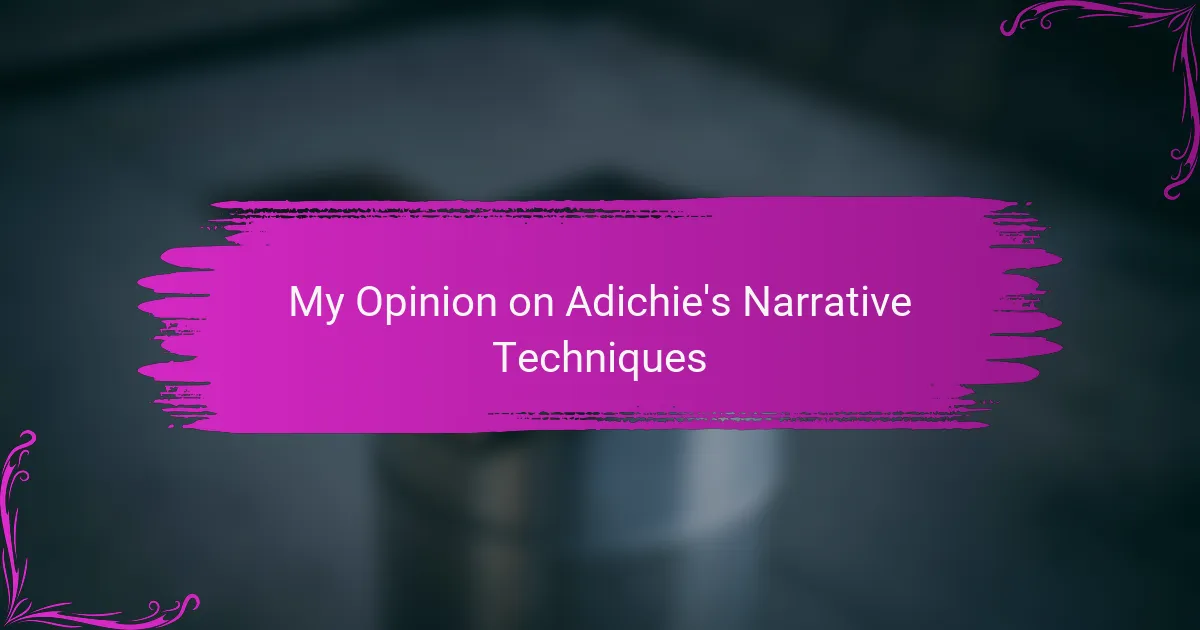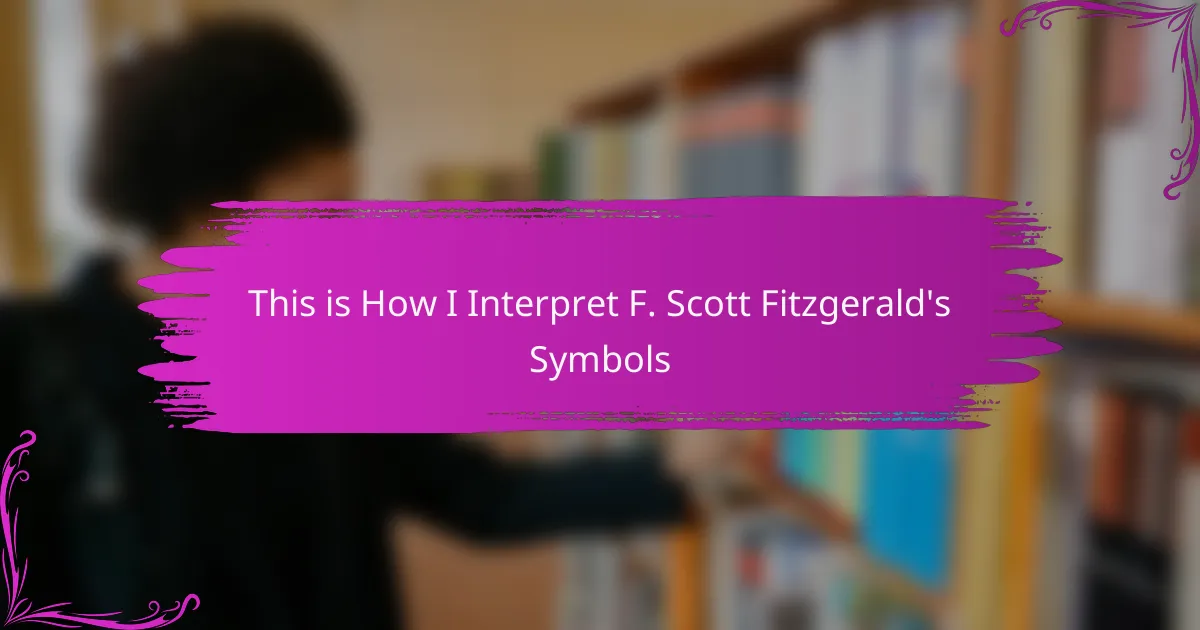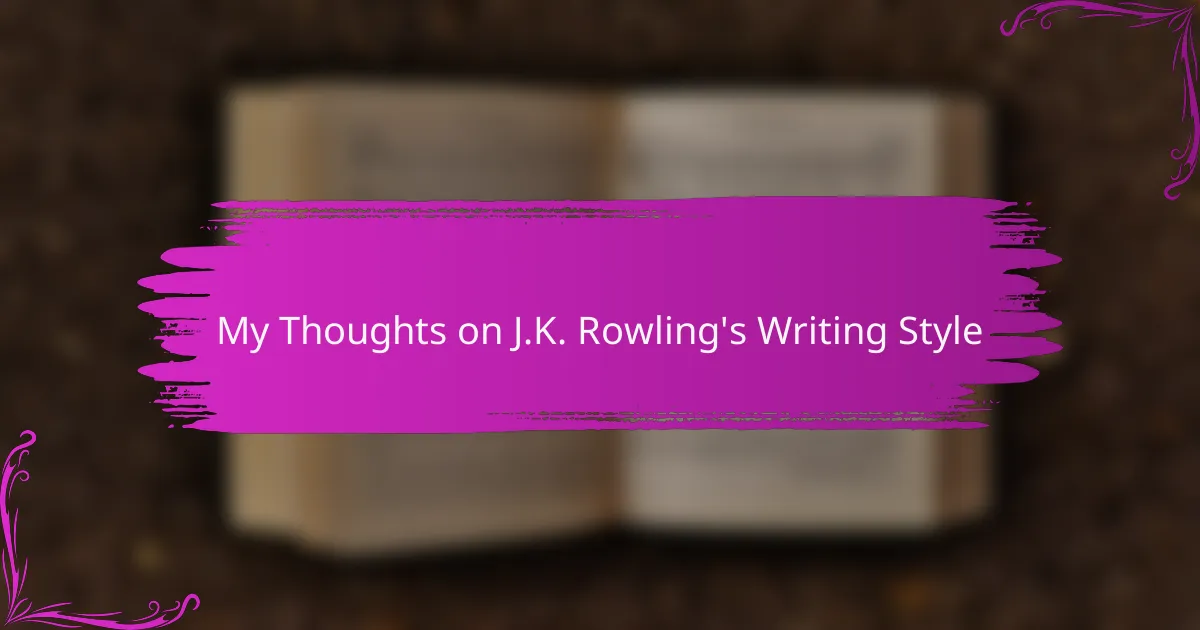Key takeaways
- Magical realism blends extraordinary elements with realistic settings, prompting readers to rethink perceptions of reality.
- Key characteristics include ordinary characters in surreal situations, emotional depth, cultural contexts, and rich symbolism.
- Gabriel Garcia Marquez’s notable works, such as “One Hundred Years of Solitude,” exemplify this genre, exploring profound themes of love and identity.
- Effective teaching methods for magical realism involve visual storytelling, group discussions, and creative writing exercises to enhance engagement and understanding.
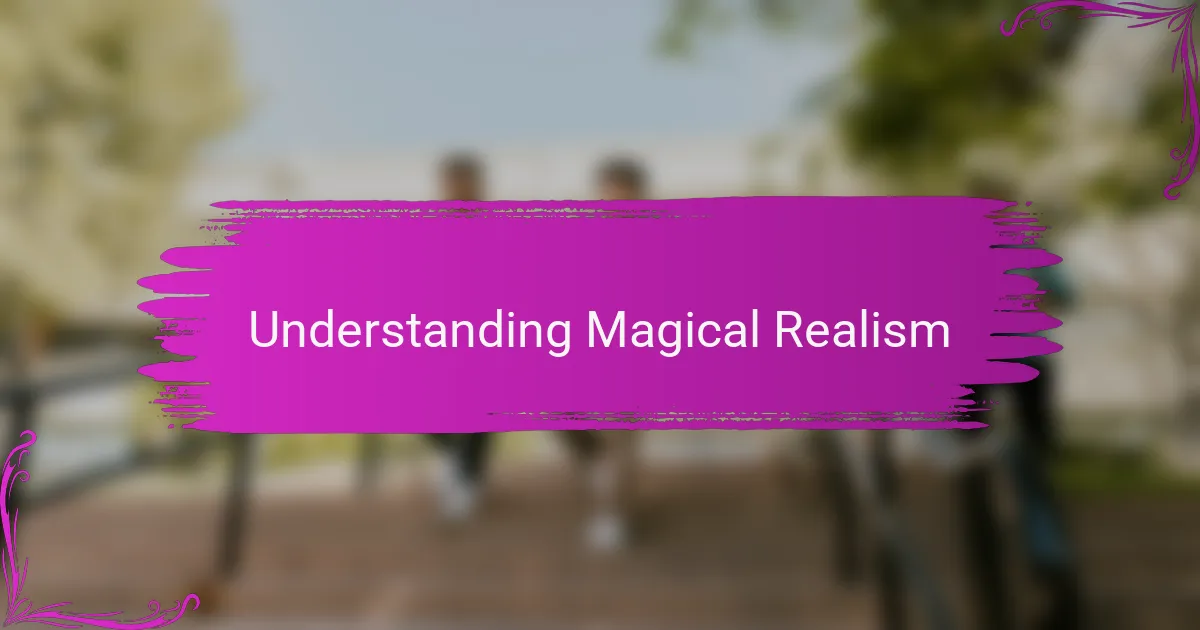
Understanding Magical Realism
Magical realism is a captivating blend of the ordinary and the extraordinary, where fantastical elements are woven seamlessly into realistic environments. I remember the first time I encountered this genre; it was like discovering a hidden door to a magical world right in my own backyard! The blend allows everyday life to be infused with wonder, prompting readers to reevaluate their perceptions of reality.
It often challenges the boundaries of what we deem possible, evoking questions like, “What if the impossible isn’t so far-fetched?” This genre invites us to explore the depths of human experience through surreal narratives that feel both familiar and strange. I’ve found that these stories push us to confront our own beliefs and emotions, revealing layers of truth that might otherwise go unnoticed.
Moreover, magical realism draws heavily from cultural and historical contexts, enriching the narrative with deeper meanings. For instance, Gabriel Garcia Marquez’s exploration of Latin American identity through vibrant storytelling resonates deeply with many readers. It’s fascinating how cultural nuances can transform a simple tale into a rich tapestry of emotional and political commentary.
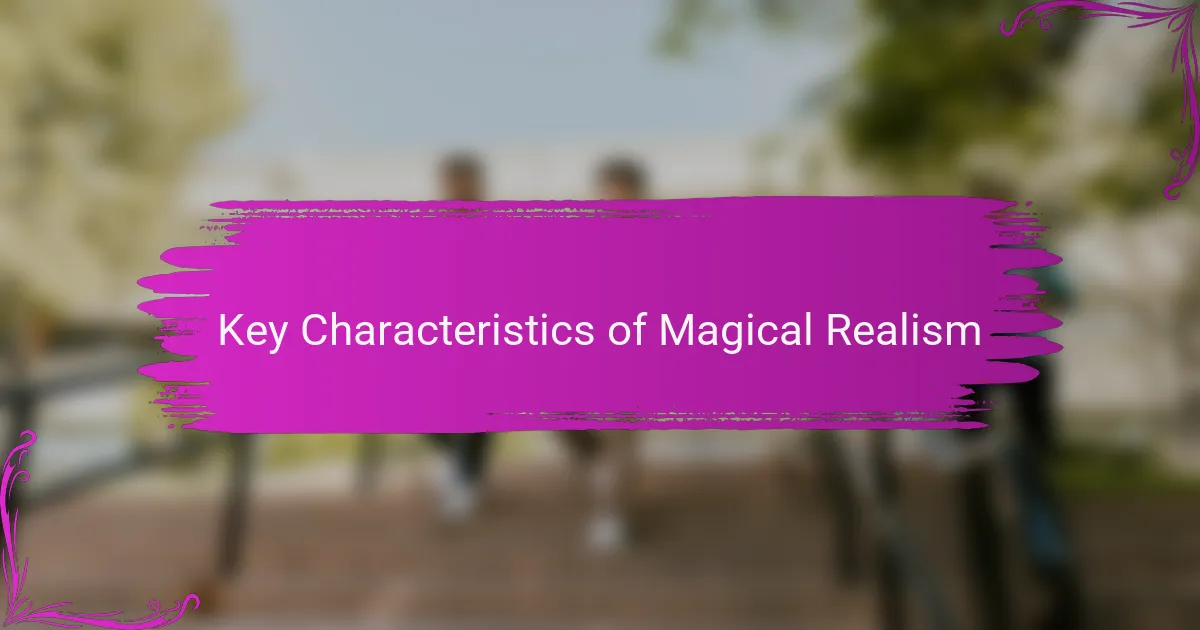
Key Characteristics of Magical Realism
Magical realism is a captivating genre that seamlessly blends the extraordinary with the mundane. One characteristic that stands out to me is the acceptance of magic as part of everyday life. This element invites readers to view reality through a more imaginative lens. I remember reading One Hundred Years of Solitude for the first time, and feeling that rush of wonder as characters casually accepted the miraculous, which made me reflect on the magic present in my own world.
Another key feature is the rich, descriptive imagery that García Márquez employs to create vivid settings. The use of lush, sensory details not only paints a picture in the reader’s mind but often evokes powerful emotions. I recall feeling deeply connected to the landscapes he described, making me question what reality truly means. This immersive quality in magical realism transforms reading into a multidimensional experience.
Key Characteristics of Magical Realism:
- Ordinary Characters in Extraordinary Situations: Characters experience surreal events without question.
- Blending of Realism and Fantasy: The narrative intertwines factual elements with fantastical ones in a seamless manner.
- Emphasis on Emotion: The genre often explores profound emotional truths within the surreal.
- Cultural and Historical Context: Often reflects the social and political realities of Latin America, infusing them with myth and folklore.
- Symbolism: Uses magic as a symbolic element to address complex themes such as identity, time, and existence.

Gabriel Garcia Marquez’s Notable Works
Gabriel García Márquez’s notable works are deeply woven into the fabric of magical realism, showcasing his unique ability to blend the ordinary with the extraordinary. Titles like “One Hundred Years of Solitude” and “Love in the Time of Cholera” reflect not only rich storytelling but also profound emotional insights that I find resonate with many readers. Personally, I remember being captivated by the intricate family histories and the magical elements that cradled the narrative in “One Hundred Years of Solitude”; it made me reconsider how the past can influence our present lives.
Some of García Márquez’s most significant works include:
- One Hundred Years of Solitude (1967) – A multi-generational tale of the Buendía family, exploring themes of solitude and destiny.
- Love in the Time of Cholera (1985) – A poignant story of enduring love and desire across decades.
- Chronicle of a Death Foretold (1981) – A tale combining elements of foreshadowing and community dynamics with inevitable tragedy.
- The Autumn of the Patriarch (1975) – A powerful reflection on dictatorship and the human condition, rich with symbolic meaning.
- The General in His Labyrinth (1989) – An exploration of the life of Simón Bolívar, filled with historical and philosophical complexities.
Each of these works evokes a different emotion, but they all invite the reader to dive into a world where magic and reality coexist.

Educational Resources for Magical Realism
There’s something truly enchanting about exploring magical realism, especially in Gabriel Garcia Marquez’s works. I remember the first time I dove into “One Hundred Years of Solitude.” The blending of the extraordinary with the ordinary opened my eyes to new ways of interpreting reality. It sparked a passion for teaching this genre, as it allows students to engage with literature on a deeper emotional level, challenging their perceptions and encouraging creativity.
When seeking educational resources, consider these engaging options:
- Literary Analysis Guides: Books or online resources that break down the themes and techniques of magical realism.
- Video Lectures: Engaging discussions and lectures from literature professors that highlight key aspects of Marquez’s storytelling style.
- Discussion Forums: Platforms where readers can share interpretations and insights to deepen their understanding.
- Creative Writing Exercises: Activities that prompt students to create their own magical realism narratives, fostering imaginative thinking.
- Critical Essays: Scholarly articles that analyze Marquez’s impact on the genre and its cultural significance.
These tools not only enhance understanding but also cultivate a love for literature in students!
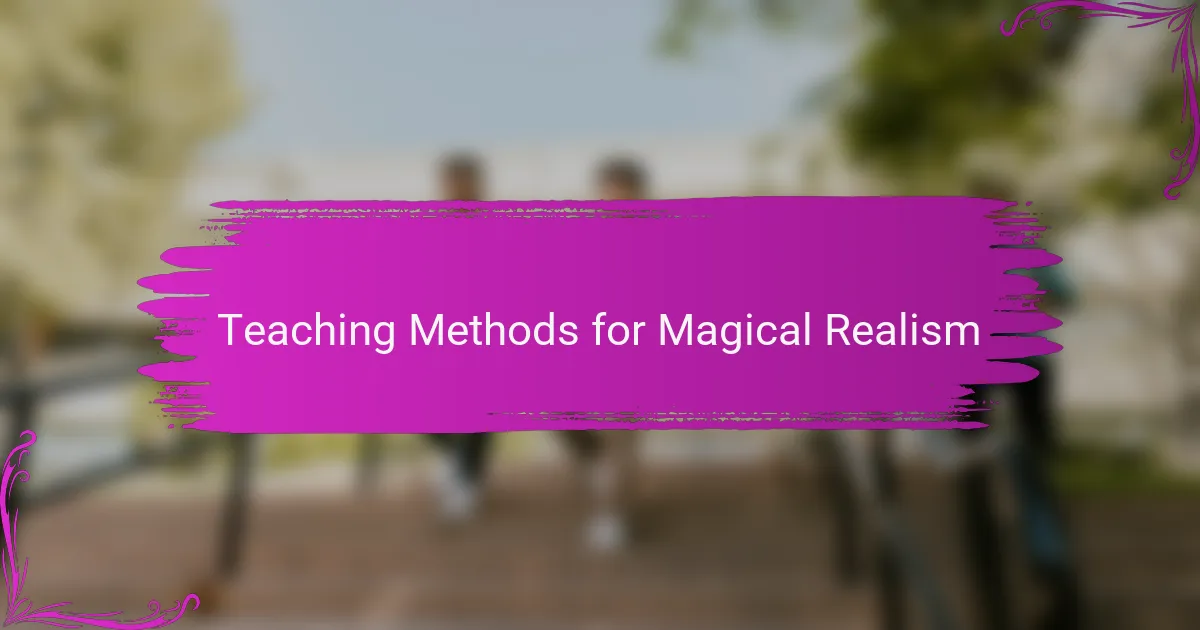
Teaching Methods for Magical Realism
When teaching magical realism, it’s essential to immerse students in the rich tapestry of this genre. I find that using visual storytelling, like film adaptations of Gabriel Garcia Marquez’s work, can ignite discussions about blending the extraordinary with the ordinary. Sharing personal experiences of how magical realism resonates in our lives often allows students to connect with the material on a deeper emotional level.
Group discussions are another effective method. In my experience, when students collaborate to unpack the themes or character motivations in texts like “One Hundred Years of Solitude,” they often discover layers of meaning they might not have found alone. Encouraging them to share connections to their own lives can transform the learning experience into something genuinely communal and engaging.
Incorporating creative assignments, such as writing their own short magical realism stories, allows students to explore their imagination while understanding the genre’s conventions. This hands-on approach fosters both creativity and a better grasp of the techniques Marquez and others use.
| Teaching Method | Description |
|---|---|
| Visual Storytelling | Using films to illustrate magical realism concepts |
| Group Discussions | Collaborative analysis of themes and character development |
| Creative Assignments | Writing personal magical realism stories for practical experience |

Personal Reflections on Marquez’s Style
Gabriel Garcia Marquez’s style captivates me with its blend of reality and the surreal. His ability to weave the extraordinary into the mundane is nothing short of magical. For example, when I read “One Hundred Years of Solitude,” I felt as if I was walking through the town of Macondo, where time dances and memories linger, creating a profound emotional connection with the characters and their fates.
What I appreciate most about Marquez’s writing is how he captures the complexities of human experience through his unique prose. His use of vivid imagery and symbolic elements leaves a lasting impression. I find myself reflecting on the themes of love, solitude, and the weight of history long after the pages close.
In my experience, reading Marquez is like opening a window to a world that feels familiar yet enchanting. His style encourages readers to embrace the beauty of life’s contradictions, leaving us pondering the deeper meanings surrounding our own realities.
| Aspect | Marquez’s Magical Realism |
|---|---|
| Imagery | Vivid, often surreal descriptions that enhance reality. |
| Themes | Love, solitude, time, and history intertwined with personal narratives. |
| Style | Fluid, lyrical prose that invites deep emotional engagement. |
